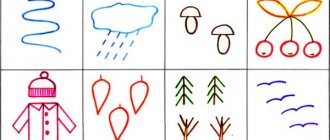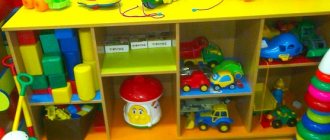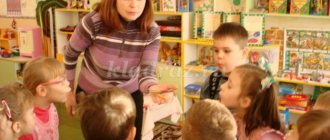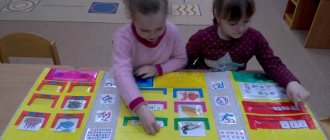There is no certain period of time during which one can and should intensively engage in the development of speech - and that’s it - as if by a wave of a magic wand, the baby took and spoke in whole sentences. This is a rather lengthy process and takes its own time for each individual child.
Parents lay the foundations on which knowledge and skills are laid like bricks. Speech development is not only dealt with from one to two years of age, until the child speaks - this is a process that has no clear boundaries. Many adults are actively developing and improving their speech and speech skills.
Factors on which speech development depends
Each child is individual, but psychologists and speech therapists identify four main factors that influence speech development:
- Anatomical features - the correct structure and functioning of the speech apparatus (tongue, palate, larynx, vocal folds), correct breathing.
As soon as the baby is born, he is immediately examined by a neonatologist and pediatrician, and during the first year of life by other specialists - a neurologist, dentist, etc. This is done in order to exclude various birth defects, to identify any diseases or predispositions in the early stages, and also prevent the development of the disease.
If deviations from normal development are detected, the doctor will be able to recommend correcting the anatomical defect, or preparing for subsequent correction. For example, a shortened frenulum does not allow the tongue to fully move in the oral cavity, and it does not reach the palate. Thus, it predetermines the occurrence of incorrect sound pronunciation.
- Physiological component. The connection between the brain and fine motor skills has long been proven - by developing small hands, you can activate speech centers.
There are a huge number of finger games and activities aimed at developing tactile sensations (various cereals, objects of different shapes and sizes, etc.). The most well-known and beloved game is “Magic Bag”.
- Emotional component. This is, first of all, a close emotional connection with mom and dad.
It is considered ideal for a child to communicate with grandparents (on both sides), brothers and sisters. The more the baby communicates with his family, the faster he joins in the conversation with them (he will wink at some, “hug” at others, and say something to others).
- Social component. First, the baby begins to communicate with his parents by screaming, when this is the only way he can say that he is experiencing discomfort, then, when recognizing familiar faces, he fixes his gaze, begins to smile, reaches out with his arms, etc. Therefore, everything that the child does is important - be sure to express emotionally your joy, tenderness, admiration.
In addition, in addition to the above factors, many specialists (speech therapists, psychologists, speech pathologists) indicate the influence of the speech of others - especially correct from the point of view of phonetics. For example, if one of the parents “burrs,” then most likely the son or daughter will do this based on imitation of a significant adult. In this case, it is advisable to correct the pronunciation of the sound P in parallel between the child and the adult.
How a child’s speech is formed from birth to 3 years
The baby learns to communicate with the outside world from the very moment of birth. Let's take a look at how the speech development of young children occurs during the first 3 years of a child's life.
Norms of speech development in children from 0 to 3 years old
- 0 – 2 months. Scream. The first form of communication for a child is crying. The baby cries when he is hungry, uncomfortable or tired.
- 2 – 3 months. Booming. Crying is replaced by cheering. The sounds “a”, “s”, “u” appear, sometimes in combination with “g”. The child learns to understand speech addressed to him and control his own sound intonations.
- 3 – 6 months. Babble. The baby begins to babble to himself and make sounds when addressed to him. Turns his head towards the sound. Freezes in response to a sudden loud sound. Cries differently depending on needs: “I’m hungry,” “I’m tired.” Recognizes his name and reacts to it.
- 6 months. First syllables. From the age of 6 months, you can notice that the child prefers strictly certain sounds to all others: “ba”, “ma” (they are the easiest to learn to pronounce). He can repeat them endlessly: he likes the way they sound.
- 7 – 9 months. Combinations of syllables. The babbling progresses to the utterance of identical syllables: “ma-ma-ma”, “dya-dya-dya”, “ba-ba-ba”.
- 9 – 11 months . Onomatopoeia. The baby imitates the sounds of adults' speech. Responds to name. Understands the meaning of the word “no.”
- 11 – 13 months. The first meaningful words from two identical syllables: “dad”, “mom”, “baba”, “uncle”.
- 12 months. The baby shows interest and attention to the speech of others, repeats and combines sounds in a new way, combines them into “words”, imitating the speech of an adult. Understands and follows simple one-word instructions (“sit down”). He waves his hand “bye-bye”, shakes his head “no”. Uses gestures and sounds to attract attention. Interested in books.
Rarely does a parent know what signs indicate deviations in the child’s development. Therefore, for prevention, be sure to visit a pediatric neurologist at 3, 6, 9 and 12 months .
- 18 months. The baby easily repeats frequently heard words. Knows different parts of the body and points to them. Masters simple words (by the age of 2 years, their vocabulary can range from 20 to 50). Answers in words or gestures the questions: “Where is the bear?”, “What is this?” He loves when people read to him. At the request of an adult, he points his finger at the pictures in the book. 2 years. First sentences (two words). A two-year-old child can easily combine simple words mastered by the age of 2 into combinations: “Mom, give me,” “I want this,” “Where is the kitty?” Understands simple instructions consisting of two sequential actions: “Find your teddy bear and show it to grandma.” The vocabulary can expand to 150 - 200 lexemes, and others can already understand half of the words the child pronounces. The baby begins to use pronouns, adjectives and prepositions. Holds a book correctly in his hands. “Reads” to his toys.
- 3 years. Multi-word sentences (three or more words). At 3 years old, the period of early childhood ends. By this turning point, the child is able to compose sentences of three or more words. Distinguishes between colors and size definitions. Remembers and repeats familiar rhythms, melodies, stories. Some difficulties in sound pronunciation may still persist (whistling, hissing, vowel sounds). The vocabulary is expanding so much that parents can no longer accurately count how many words it consists of. In general, the baby is already ready to speak out on any occasion.
Stages of child speech development
As we have already said, the trajectories of speech development are individual for each child, and therefore psychologists and other specialists in the field of early development do not establish clear standards for speech development in children.
It is important to note that an indicator of speech development is not only the number of sounds and words that a child uses to communicate, but also his passive vocabulary, that is, those words that the child understands. The passive vocabulary is always larger than the active one, so if the child does not speak, but understands your speech, there is most likely no reason to worry.
Speech skills characteristic of the conditional norm in early and junior preschool age are presented in the table.
| Age | Speech development |
| 1-3 months | Scream. |
| 3-6 months | Humming – drawn-out sounds (“a-gu”, “a-gy”, “bu-u”, etc.). |
| 4-5 months | Squealing, laughter. Humming in various intonations. |
| 6 months | Babbling (syllables “ma”, “ba”). |
| 7-8 months | Increasing the number of pronounced sounds, onomatopoeia (“woof-woof”, “pee-pee”), understanding simple words and requests. |
| 9-11 months | Simple words (“mother”, “baba”, “give”, “na”). |
| 1–1.5 years | Simple two-word phrases (“give yum-yum”, “there’s a pussy there”). |
| 2-3 years | Phrases of 2-3 words, the appearance of question words. Naming famous colors, objects, body parts. Learning simple poems, telling short stories. |
| 34 years | Phrases of 4 or more words. A stranger can understand a child’s speech. |
If there is a strong discrepancy between the child’s speech development level and age norms, it is advisable to seek advice from a specialist (neurologist, speech therapist, psychologist) in order to exclude a delay in psycho-speech development.
Symptoms of delayed speech or mental development of a child may include the following:
- Problems with chewing and swallowing food;
- Constantly open mouth, excessive salivation;
- Refusal to communicate;
- Lack of eye contact;
- Slurred speech, “porridge in the mouth”;
- Difficulties in understanding speech (does not respond to requests);
- Inappropriate behavior.
Timely contact with specialists allows you to identify the cause of the child’s delayed speech development as early as possible and develop an individual plan for correctional and developmental classes.
Types of speech
Speech can be active or passive:
- Active - the one that the baby uses. The child knows the words he has learned, can confidently pronounce them, and construct sentences with their help.
- Passive is the one that the child understands, but for certain reasons does not pronounce. For example, he may know the word “TV”, but not say it because it is difficult for him.
It is very important to develop both active and passive speech of a child.
How to help develop speech by age
Up to a year old, the baby makes his first attempts to speak - he smiles in response to visual and verbal contact with adults, tries to say some sound or even repeat after mom or dad. Therefore, it is very important to focus on these attempts, smile, look at the baby, showing in every possible way that you are interested.
1-3 years. At this age, mothers and fathers, when communicating with a child, try (on an unconscious level) to speak to the baby in his language - briefly, understandably, clearly. Thus, the child understands what is being said to him, what he wants to say. Try to get rid of baby talk and empty repetition (such as “ba-ba”, “peek-a-boo”). The child must hear the words in full so that later he can say them the same way, and not shorten the syllables, rearrange them, distorting the meaning. Correct speech stimulates communication.
From 3 years and older. The most common opinion of most modern parents is that by sending a three-year-old child to kindergarten, the pace of communication can be slowed down, and all the necessary speech skills will be developed by the employees of the child care institution. This is wrong. Parental communication remains just as important, because it is in the family that the foundations of communication are laid, on which the rest of the acquired knowledge will be superimposed.
Speech development at an early age
Sometimes we mistake baby talk for “real” words. A child under one year old tries to repeat the speech of an adult in his own language, often understandable only to his mother. Already a six-month-old baby uses gestures and individual sounds to indicate his needs. Also at this age, the child learns to combine vowels and consonants when pronouncing syllables.
The process of speech development itself is not systematic in children of early and preschool age; very often one can observe leaps in speech development. All children begin to speak at different times. By the age of one year, some children can already pronounce up to 15 separate words. And according to the calculations of child psychologist S. Buller, by the age of 1.5 years, a child’s vocabulary can reach 232 words. At the same time, there are healthy children who at the age of two do not speak a word. Such “silent people” can suddenly begin to speak in whole phrases, catching up and ahead of their peers.
To get a silent child to talk and stimulate the development of his speech, you need to voice your actions, encourage dialogue with the help of questions, listen with interest and try to understand the baby’s answers. Then you will certainly hear that cherished first word.
How to help young children develop speech
What can we, parents, do from the very birth of a child to ensure that he speaks naturally?
Let us remind you that the sensory channel for perceiving information about the external environment (vision, hearing, taste, smell and touch) is the main one for children in the first years of life.
Therefore, the answer lies on the surface: it is necessary to give the child as much information as possible about the world around him, as much as possible of any kind of sensory sensations and stimuli. Let's talk about it.
- Touch. Feeling #1 at first.
Mother's warm hands, her gentle touches, stroking, massage, gymnastics, toys of different shapes and textures, finger games - the more of this, the better.
Knowledge about oneself, one’s body and its sensations is formed through contact with the environment, so diversify the child’s tactile sensations as much as possible. Water of different temperatures (carefully!), soft fabric and rubber balls, a plastic rattle and a wooden cube, finger paints on a palette, sand in a children's sandbox, beans in a jar, etc. - the world is so rich for training your sense of touch!
- Hearing.
Give your baby as much information as possible that he can perceive by ear:
- sounds of music
- nature
- household appliances in the house
- street noise from the window
- sounds of native speech, etc.
Always talk to your baby about everything. Mom does this naturally, because speech accompanies any of her actions: she voices swaddling, feeding, bathing, and putting her to bed. She names objects surrounding the child, pointing at them.
When the baby starts to walk, the mother “keeps up the conversation”: she responds to the sounds the baby makes, repeats them and introduces him to adult speech, which the baby will try to imitate as he grows up.
- Vision.
We interest the baby in the objects around him so that he learns to focus his vision and maintain his attention on significant objects.
To help your child concentrate, you can hang bright colored objects above the crib (for example, balloons, fluffy pom-poms - they are quite light and will certainly attract attention).
Some mobile models come with removable toys to help adults provide a stimulating and varied space for their child. This is for the little ones.
Later, the arsenal of objects from the surrounding reality can be replenished endlessly, both due to toys in the house, and due to the visual impressions that the baby will receive when he is outside the home: on a city street, on a river, in a forest, in a zoo.
- Taste.
Mother's milk, water, teas, juices, pureed and solid food - what a variety of textures and tastes! Introduce your baby to them by gradually expanding the range of products that you introduce into baby food. The sooner a child becomes familiar with basic tastes, the less picky he will be in food later.
Pictures as a means of developing coherent speech in preschool children
Scientific supervisor – Ph.D., Associate Professor, Gazizova Farida Samigullovna
Kazan (Volga Region) Federal University, Elabuga Institute (branch) of the Federal State Autonomous Educational Institution of Higher Education "Kazan (Volga Region) Federal University, Faculty of Preschool Education
Annotation. The article presents the experience of using pictures in the process of developing coherent speech in preschool age. Modern ideas about coherent speech and its features in preschool age are analyzed. The article contains data on a diagnostic study of the level of development of coherent speech in preschool age.
The problem of developing coherent speech in childhood is one of the current pedagogical problems and one of the main tasks of a preschool teacher is the development of coherent speech in children using a variety of means. The developed coherent speech of children is an important indicator of the development of their speech culture and communicative competence; it is one of the parameters of the harmonious development of a child’s personality and a guarantor of successful learning at school.
Unformed coherent speech causes a lot of difficulties in children, mainly in the process of communicating with peers and with adults; it is difficult for them to establish interpersonal contacts with people around them [2]. A low level of development of coherent speech leaves a negative imprint on the child’s interpersonal communication, which impedes normal social adaptation. Therefore, it is necessary to pay maximum attention to the development of coherent speech in preschool children.
Modern pedagogical science has many tools and methods that promote the development of coherent speech in childhood. These are gaming methods, retelling, composing descriptive and narrative stories. To achieve the best results when using these methods, it is necessary to use visual material, as this is required by the psychological characteristics of the development of thinking in preschool age. A picture serves as a necessary visual aid in the process of developing coherent speech in children. It helps to express verbally what is depicted on it.
The relevance of the study is that in the process of developing coherent speech in preschool age it is necessary to use pictures that will make this process perfect and exciting. Timely diagnosis and competent correction of coherent speech through pictures will contribute to the speech development of preschool children and the establishment of communication with peers and adults.
The object of the study is the process of development of coherent speech in preschool children.
The subject of the study is a picture as a means of developing coherent speech in preschool age.
The purpose of the study is to study the features of using pictures in the process of developing coherent speech in preschool children and to experimentally test the effectiveness of correctional and developmental work on the development of coherent speech in preschoolers through pictures.
Research objectives:
1. Analyze the scientific and methodological literature on the research problem and identify the features of the process of development of coherent speech in preschoolers through pictures.
2. Assess the level of development of coherent speech in preschool children at the beginning of the experiment.
3. Organize and conduct experimental work on the development of coherent speech in preschoolers through pictures.
4. Analyze the results of the experimental work and evaluate its effectiveness.
The research hypothesis is that the use of pictures in the process of developing coherent speech in preschoolers will make this process more effective and efficient.
The methodological and theoretical basis of the study was the works of A.M. Borodich [1], A.N. Gvozdeva [2], V.P. Glukhova [3], R.I. Lalaeva [4], A.A. Leontyev [5], F.A. Sokhina [6], E.I. Tikheyeva [7], T.B. Filicheva [8], G.V. Chirkina [9], covering various aspects of the problem of the formation of coherent speech in preschool age.
The experimental study took place at Kindergarten No. 14 “Zernyshko” from October 2022 to February 2022. Children of senior preschool age took part in it. Number of children: 20 people.
Research methods:
1. Compiling a descriptive story based on the picture “Winter” from the series seasons.
2. Compiling a narrative story based on a series of plot pictures “The Boy and the Swallow”.
Children's answers were assessed according to the following indicators: integrity of the story;
- matching the story to the picture;
- consistency, logic of the story, presence of all semantic links;
- grammatical and lexical formatting of the story,
Rice. 1. Level of formation of coherent descriptive speech in preschool children at the beginning of the experiment
Having analyzed the results of the descriptive story compiled by the children based on the picture “Winter”, it was revealed that at the beginning of the experiment, the majority of children (45%) had an average level, 25% of children had a low level, 20% of children had an above average level, 10% of children had - high level.
Most children were able to compose a descriptive story only with the help of the teacher using leading questions. The children made numerous mistakes, but the general meaning of the story was clear. The children used simple, one-syllable sentences. For example, the story sounded like this: “Winter. Tree covered with snow. Birds are looking for food. Children play in the snow." "This is winter. It snowed. Bare trees stand. Big birds fly and look for food.”
Rice. 2. Level of formation of coherent narrative speech in preschool children at the beginning of the experiment
Having analyzed the results of a narrative story compiled by children based on the picture “Boy and Swallow”, it was revealed that the majority of children (50%) have an average level, 30% of children have a low level, 15% of children have an above average level, 5% of children have a high level. Most children experience a violation of the sequence of the narrative, in some cases there is a loss of semantic integrity.
These results indicate an average level of development of coherent speech in preschoolers. These results indicate the need for correctional and developmental work with children, which was based on the methodological developments of A.M. Borodich [1], V.P. Glukhova [3], E.I. Tikheeva [7], T.V. Tumanova, T.B. Filicheva [8], G.V. Chirkina [9]. A series of classes on the development of coherent speech in preschoolers using story pictures was developed.
The main objectives of the formative experiment were:
- improving coherent monologue speech in preschoolers;
- teaching children logical statements and sequential compilation of plot stories based on pictures;
- teaching children coherent storytelling;
- teaching children the correct grammatical and lexical formatting of stories;
- expansion of vocabulary.
The results of the control experiment showed that the developed experimental cycle of classes on the development of coherent speech through pictures made it possible to achieve positive dynamics. The number of children with a high level of development of the ability to compose descriptive and narrative stories based on pictures has increased. Children's stories became more consistent, holistic, and meaningful. Comparing the results of the ascertaining and control stages, we can conclude: experimental work on the formation of coherent speech in preschoolers using story pictures led to positive quantitative and qualitative changes.
Bibliography.
- Borodich, A.M. Methods for developing children's speech / A.M. Borodich. – M.: Academy, 2011. – 384 p.
- Gvozdev, A.N. Issues in the study of children's speech / A.N. Gvozdev. – M.: URSS, 2014. – 226 p.
- Glukhov, V.P. From the experience of speech therapy work on the formation of coherent speech of children with special needs of preschool age / V.P. Glukhov // Defectology. – 2009. – No. 4. – P. 68−75.
- Lalaeva, R. I. Formation of correct spoken speech in preschoolers / R. I. Lalaeva, N. V. Serebryakova. – SPb.: SOYUZ, 2011. – 224 p.
- Leontyev, A.A. Studies of children's speech / A.A. Leontyev. – M.: Education, 2004. – 268 p.
- Sokhin, F.A. Psychological and pedagogical foundations of speech development in preschool children. – M.: Publishing house of the Moscow Psychological and Social Institute, 2012. – 224 p.
- Tikheyeva, E.I. Development of children's speech / E.I. Tikheeva. – M.: Academy, 2011. – 111 p.
- Filicheva, T.B. Elimination of OHP in preschool children / T.B. Filicheva. – M.: Iris-Press, 2012. – 224 p.
- Chirkina, G.V. Main directions for improving the system of preschool speech therapy assistance / G.V. Chirkina // Defectology. – 2009. – No. 1. – P. 23−32.
Songs, rhymes and nursery rhymes for speech development in children 2 - 3 years old
These are perhaps the most effective, generation-tested ways of communicating with young children.
Basic principles:
- simple rhyme
- repetition of sounds or words
- small size
- accompaniment with gestures/actions
Rhyming poems can be told, or they can be sung using various melodies.
The main purpose of nursery rhymes, finger games, rhymes:
- emotional contact with the child
- development of his speech skills
- finger massage
- study of body parts
- assistance in establishing a routine
For example, by repeating the same rhyme before bedtime, you can develop in your child the expectation of a funny rhyme and the understanding that it is time for him to sleep.
IMPORTANT: Young children need consistency and order as this develops a sense of stability and security.
You can come up with or choose from the many available nursery rhymes, one for different occasions:
- morning hygiene procedures
rhyme for washing
- changing baby's clothes
rhyme when changing clothes
- preparation for swimming
bath rhyme
- before gymnastics
rhyme for gymnastics
- finger massage
poem for finger massage
- before bedtime
bedtime poems
The classic nursery rhymes “okay”, “cockerel-comb”, “horned goat”, “white-sided magpie” and many others will also delight the baby and be useful.
Playing and learning to speak: role-playing games for children
Options for playing with a child are limited only by the parents' imagination. At the same time, the child often independently suggests what he wants to do, distributes roles and organizes the game. Your mission is to fill the game with detailed dialogues so that the game is not only exciting, but also useful for the development of the baby’s speech. It can be:
- Hide and seek The classic game of “peek-a-boo” with infants can gradually change. You can hide behind anything, attracting the child with the words “where is mom?”, “find mom.” As the child grows up, he will begin to enjoy hiding on his own, and you, with appropriate verbal accompaniment, will look for him.
- Role-playing games At first, these can be very simple games. For example, you can play with a toy phone, a child can call mom, dad, brother, sister, say “Hello,” find out “how are you?” and vice versa. Then you can role-play fairy tales, come up with stories yourself, using household items and toys
- “Guess” There are many variations of games. You can ask your child: “guess what I’m doing?” and show some action: combing your hair, pouring tea into cups. Or ask: “guess who I am?” and depict a bunny or a bear cub. You can show soft animals and ask: “guess who it is?”, “what does he like to eat”, “where does he live?” If the child cannot answer, you should give a detailed answer yourself, and after a while repeat the questions to the child
- Active games Nursery rhymes and songs can be used in active play with the child, encouraging him to repeat the corresponding actions along with the words. This, in parallel with speech skills, will develop both the child’s physical and musical abilities. Examples:
nursery rhyme with movements 1
nursery rhyme with movements 2
What mistakes can parents make when developing their child’s speech?
Often the child is overly patronized and protected, they try to predict his desires - of course, out of love for him. But then the baby does not develop the desire to work independently, he does not learn to express his thoughts through speech, and many processes in his development may be inhibited.
• Intuition and love help loved ones understand a child literally at a glance. But communicating with unfamiliar people in unusual conditions will be difficult for him, and in the worst case, acutely uncomfortable. To prevent this from happening, as you grow older, you need to enter into conversations more often with new and new interlocutors, and then the child will simply be forced to improve his speech understanding skills.
• Some parents underestimate, while others overestimate, the requirements for the baby’s speech. In the first case, they do not demand anything from the child, all his wishes are guessed and immediately fulfilled, in the second, they constantly pester him: “Tell me!”, “Repeat!”. Sometimes in one family two extreme approaches are used at once: for example, dad demands, and grandmother takes care. This has a very adverse effect on the child’s speech development.
• Try to eliminate lisping, “baby talk,” and constant onomatopoeia when communicating with your baby. The parent's speech is a model for the child.
• Parents can speak very quickly or, conversely, too slowly, without pauses and different intonations, monotonously. It is important to use all the richness and diversity of language when developing a child’s speech.
• Do not try to speed up the baby's natural speech development. Avoid overwork from speech classes and memorization of poetry.
First phrases
An important stage in speech development is the acquisition of phrasal speech in preschool age. By the age of 1.5–2 years, simple two-word phrases usually appear in speech. The vocabulary is actively increasing, verbs, prepositions, and adverbs are being used. At 2-3 years old, children begin to use adjectives. The age of 3-5 years is often called the age of “why”. During this period, children are interested in everything, eagerly learn about the world around them and, accordingly, ask adults many questions.
If at this age the child does not have phrasal speech, you should consult a specialist. Developmental activities will help fill in the gaps and lay the foundation for the further development of your baby’s speech.
To develop your child’s phrasal speech, you can do the following:
- Read books to your child that are appropriate for his age;
- Look at the pictures;
- Listen to music with your child, sing songs, dance;
- Answer the child’s questions and support his research interest;
- Provide the child with new impressions, discuss what he sees;
- Monitor the purity of your own speech;
- Encourage communication with children.
There are also a number of games and exercises that contribute to the development of a child’s speech. These include:
- Games to develop fine motor skills;
- Articulation gymnastics;
- Finger gymnastics.
You can get acquainted with these and many other useful exercises in classes at. The good thing about these games is that you can play them at home yourself. They not only have a beneficial effect on speech development, but also develop the baby’s attention, memory, and thinking. Perform only those exercises that evoke positive emotions in you and your child, do it unobtrusively and with genuine interest. The most important thing is to enjoy communicating with each other.







